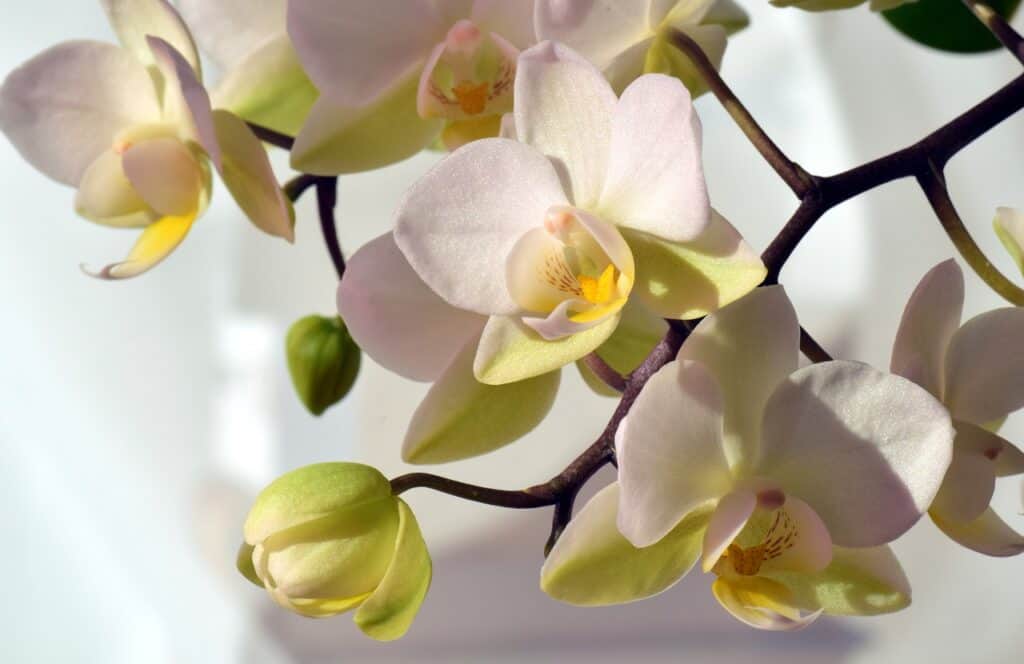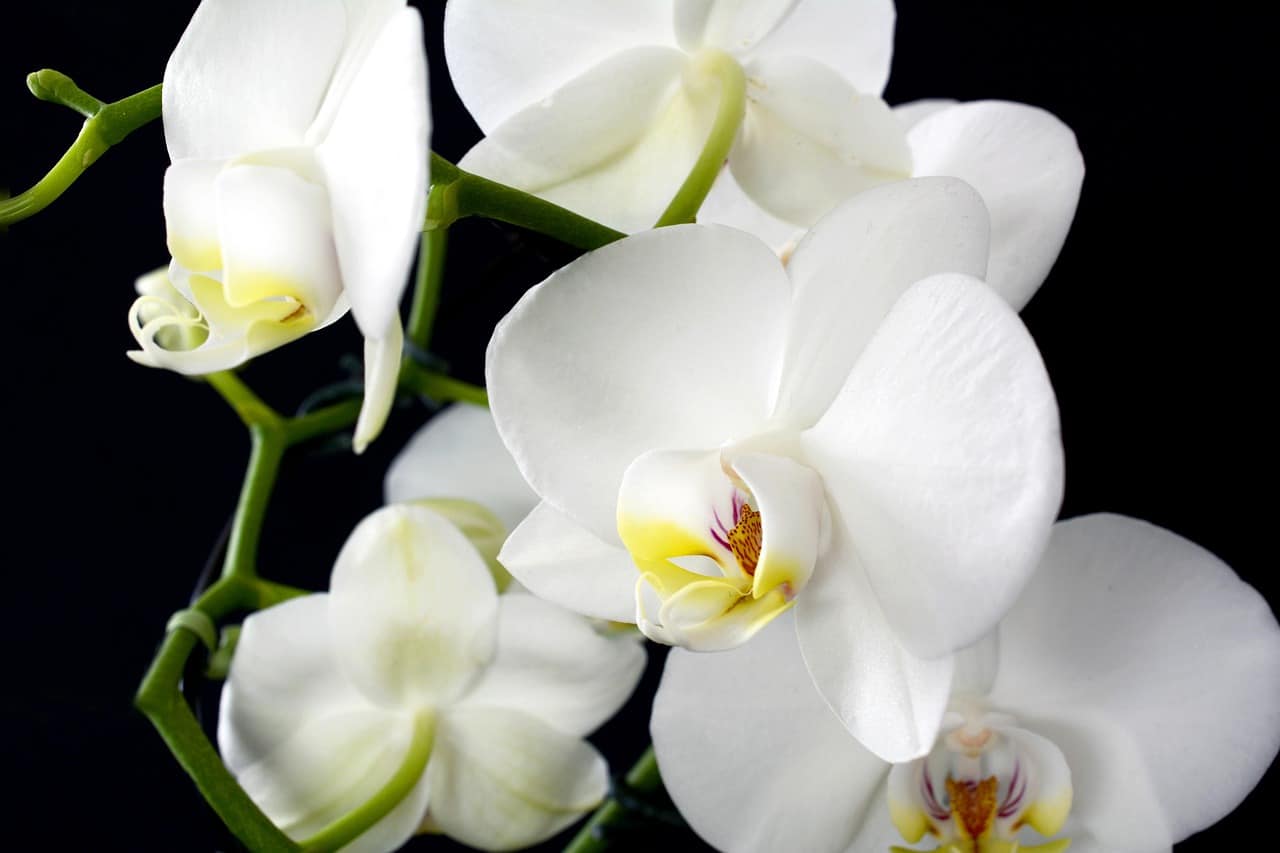Orchids are one of the most beautiful and unique plants, with their stunning flowers and long-lasting blooms. However, they can also be sensitive and challenging to grow. One common issue that orchid owners face is yellowing leaves. Yellowing leaves can be a sign of a variety of problems, from over-watering to disease. In this complete guide, we will cover the different causes of yellowing orchid leaves and provide valuable tips and methods to prevent them from harming your precious plants.

Understand the Causes of Yellowing Orchid Leaves
Knowledge of the common causes of yellowing orchid leaves can help you identify the problem and prevent it from happening in the future. The most common causes include:
1. Pest infestation: Insects like scale and spider mites can infect orchids and cause yellowing leaves. These pests extract the sap from the plants, causing discoloration and damage.
2. Fungal or bacterial infection: Fungal or bacterial infections can cause yellowing leaves and other deformities in orchids. A common fungal infection is root rot, which can be caused by overwatering or poor drainage.
3. Lack of nutrients: If orchids lack the proper nutrients, especially nitrogen, the leaves may turn yellow.
4. Over-watering: Over-watering is perhaps the most common reason for yellowing leaves in orchids. A potted orchid’s roots cannot dry out fast enough if the potting mix always remains wet.
The Importance of Identifying the Cause Before Treatment
It’s essential to identify the cause of yellowing orchid leaves before treating them. Some remedies can be harmful or ineffective, depending on the cause. In addition, treating yellowing leaves as a symptom rather than identifying the underlying issue can mask the underlying problem, potentially causing more harm to the orchid.
Ensure Proper Watering and Humidity Levels
As mentioned earlier, over-watering is a common cause of yellowing orchid leaves. Over-watering can lead to root rot, depriving the orchid of oxygen and causing yellowing leaves, wilting flowers, and stunted growth. The roots are constantly wet, making them susceptible to bacterial and fungal infections.
Tips for Watering Orchids Correctly
Correct watering is essential to prevent yellowing and other issues in orchids. Here are some tips to follow:
1. Water when the potting mix is almost dry. Do not let your orchid sit in standing water.
2. Use fresh, clean water when watering. Avoid using tap water, if possible, as it may contain minerals that can damage your orchid. If tap water is your only option, let it sit out for 24 hours before using it.
3. Never water from above the plant, as it can result in bacteria or fungal growth. Instead, water around the plant’s base, taking care not to soak the leaves.
4. Pay attention to humidity levels to avoid the orchid’s roots from drying out.
Provide Adequate Lighting and Temperature
Providing your orchids with the proper amount of light and temperature is crucial in keeping them healthy. Adequate lighting enables photosynthesis, and correct temperatures ensure optimum growth and flower production.
How to Adjust Lighting and Temperature for Your Orchid
Different orchids have different lighting and temperature requirements. Here are some general rules to follow:
1. Light: Most orchids require bright, indirect light for 12-14 hours per day. Avoid placing your orchids in direct sunlight, as it can damage the leaves.
2. Temperature: Orchids thrive in temperatures between 65-75 degrees Fahrenheit (18-24 degrees Celsius) during the day and 55-60 degrees Fahrenheit (13-15 degrees Celsius) at night.
3. Humidity: Orchids require high humidity levels, between 40% and 60%. If you live in a dry climate, consider using a humidifier or placing a tray of water near your orchids to increase humidity levels.

Repotting Orchids
It’s important to know when repotting is necessary. Once every two years, orchids should be repotted when the potting mix breaks down and no longer drains as it should. If the orchid has outgrown the pot or has spider mites, disease, or fungus, repotting becomes even more important.
How to Repot Orchids
Repotting your orchids is easy and necessary to prevent yellowing leaves. Here’s how to do it:
1. Remove the orchid from its pot and gently remove any old potting mix without damaging the roots.
2. Inspect the roots for any damage or disease.
3. Using fresh potting mix, place the orchid in a new pot in the center, spreading the roots around the potting mix.
4. Add more potting mix, tapping gently to release any air bubbles and stabilize the orchid.
Orchid Nutrition and Fertilization
Nutrients are a crucial factor for orchid growth and health. Your orchid may suffer from yellowing leaves if it lacks proper nutrients. The most important nutrient for orchids is nitrogen, followed by potassium, and phosphorus.
How to Fertilize Orchids
Here are some essential tips for fertilizing your orchids:
1. Choose a fertilizer made explicitly for orchids.
2. Follow the directions on the fertilizer label.
3. Fertilize in the morning and avoid fertilizing when the orchid is dehydrated.
Pest and Disease Prevention and Control
There are many pests and diseases that can affect orchids. Some of the most common include:
1. Spider mites: These tiny insects pierce the leaves to eat the sap, causing yellowing leaves.
2. Scale: Scale insects attach themselves to leaves and suck out the sap, causing yellowing leaves and blackening.
3. Root rot: Root rot is caused by over-watering or poor drainage and causes yellowing leaves, wilting, and decay.
Prevention and Control of Pests and Diseases
Here are some essential tips to prevent pests and diseases:
1. Inspect your plants regularly and quarantine new orchids for at least two weeks.
2. Keep your orchids clean.
3. Avoid over-fertilizing, over-watering or under-watering your orchids.
4. Learn how to identify pests and diseases and apply the appropriate pesticide or treatment.

Conclusion
Yellowing orchid leaves can be frustrating and distressing, but with proper care, you can prevent them from happening altogether. By following the tips and methods in this guide, you can enjoy a beautiful and healthy orchid. Remember to always pay attention to your orchid’s needs, and in case of problems, identify and address the underlying issue as quickly as possible.

